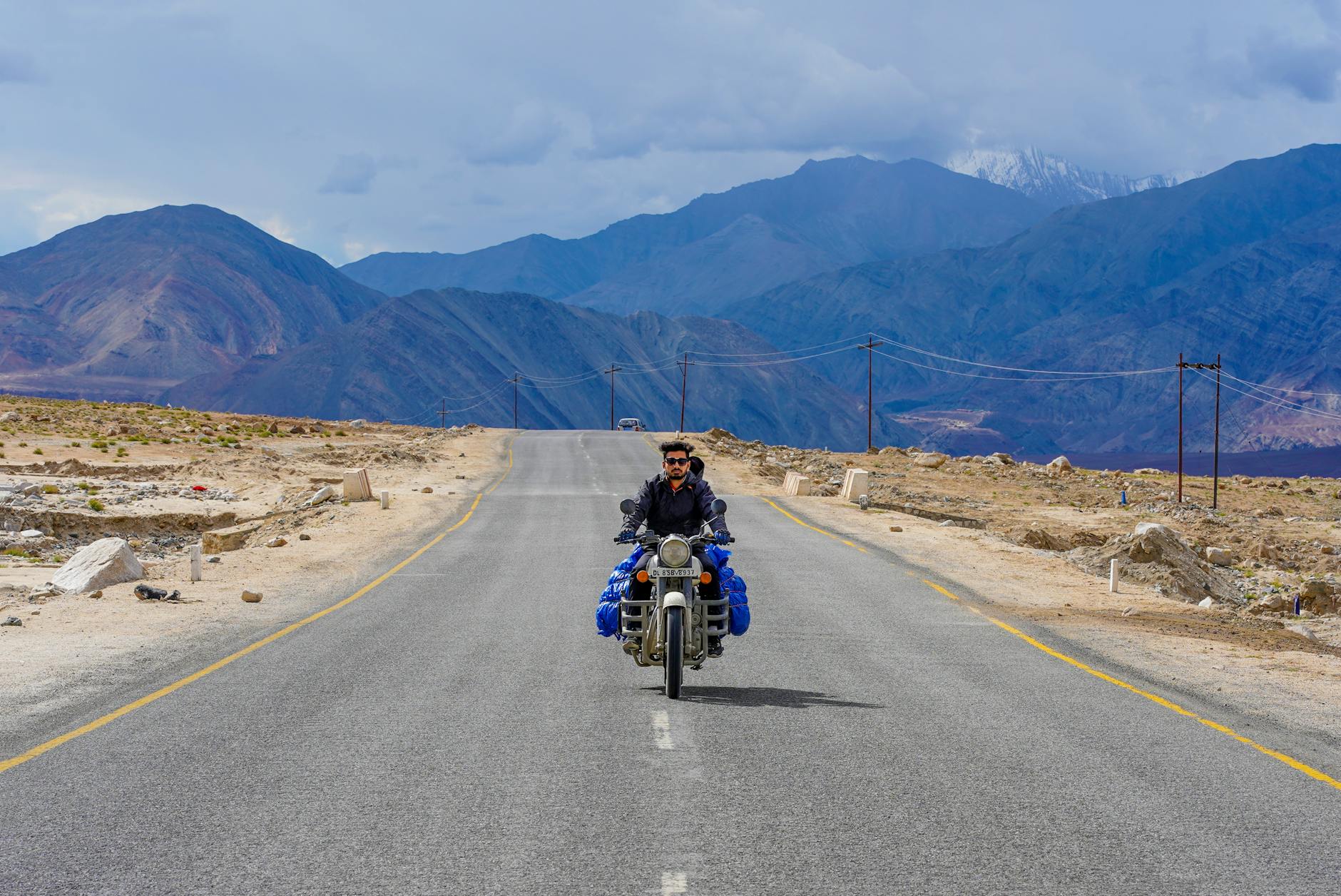Inspiration for creativity springs from the effort to look for the magical in the mundane.
Note: 1254 words – Completed in 1 h 27 minutes (brainstorming + writing) – typed version with minor grammatical edits made (originally handwritten on 25 August, 2024)
As the clock strikes 10 pm, the children climb into bed, their tummies rumbling with hunger. It’s the 5th consecutive day they’ve had to go to sleep without dinner. The village’s farmland was ravaged this year by a massive drought – wiping out all hopes of a plentiful harvest. After all, not much grows in their small village in the high-altitude cold desert of Ladakh. This situation is normal, everyday life for them. Yet, though deprived of resources, their hearts are full of hope: Hope that things will get better soon. The source of the villagers’ hopes is a middle-aged, energetic scientist named Sonam Wangchuk. Mr. Wangchuk has been working on an irrigation project using mind-boggling innovation – the “ice stupas”. Through a network of pipes, he has created a system where the water from streams is carried uphill by the pipes & frozen into massive ice sculptures – preserving them & providing a reservoir of irrigation water for the warmer and dry months, when the ice sculptures slowly melt & provide a steady supply of life-giving water for all the villagers in the area.
This story of Mr. Wangchuk and a poor village in Ladakh is not one from fiction, but a real-life testament to the genius of humanity. We humans are the only known species on Earth with the capacity to think rationally, reason, and most importantly, create & innovate. Mr. Wangchuk’s ice stupa project is a classic example of how the inspiration for creativity can emerge out of a simple effort to search for something new – something magical in the mundane. Despite its seemingly impossible nature, humanity is adept at using their well-developed brains to find the needle amidst the haystack.
In this essay, we will embark on a journey through time and space to witness the marvels of human creativity and how attempts to discover novel ideas & methods often transformed the course of history itself.
Before we dive into this ocean of examples of human genius, however, we must understand what this “magical” term implies. Is it just the fictional or the imaginative? That would be a rather narrow interpretation. The search for something magical in the mundane simply means the effort to find something different – a unique solution, product, thought, or way of doing or approaching some pre-existing problem or challenge.
Why is it then that this extraordinary effort to discover something magical produces the much-needed inspiration for creativity? It is because the status quo is often boring, problematic, and riddled with flaws, problems and inefficiencies. Continuing with the status quo, despite its seemingly perfect arrangement, is a trap of comfort. It doesn’t make you think. Instead, you just accept things passively as they come, without question. There is a need for change, and that is where great men & women who think differently fit into the picture.
Let us now explore how these transformations manifest themselves. In 18th century America, despite the growing settlements & seemingly flourishing trade, the people were not happy. After all, they lived in New England – far geographically from the mother country, but bound by her shackles of monopoly on trans-Atlantic trade, laws & never-ending taxes. Fed up by this continuing status quo, the American colonies & their leaders decided that things must change. In their effort to discover a solution to their woes, they produced a unique idea hitherto unexpressed – no taxation without representation. Sparked by this underlying principle, the American Revolution emerged as the first movement in the world to upend the status quo of colonial exploitation & gave birth to a new nation, founded on the bedrock of self-determination & independence to shape her destiny.
Such efforts to shape one’s destiny aren’t unique to the Americans, but can also be seen across the Pacific, in a collection of islands known as Japan. Reeling from years of bloody warfare & the consequences of imperialism (and two nuclear attacks), Japan was devastated in 1945. Their future for years to come would be bleak, tormented by the consequences of their past actions. Yet, the leaders of Japan decided to look for a solution. Even amidst this despair, they chartered a recovery path for their nation by cooperating with the Americans in rebuilding their country, giving up warfare & embracing peace & harmony, and capitalizing on their strengths. Realizing their dearth of natural resources, they instead focused on their advantages in the skilling, work ethic & resilience of their people – unparalleled human resources & became a world leader in innovation, high-quality manufacturing, disaster-resilient infrastructure, and environment-friendly living.
Closer home in the Himalayas, the problem of deforestation was rampant. Destroying the local ecosystems recklessly for the sake of development had become the norm. Amidst this, a group of women villagers decided enough was enough and tried to save their forests in a different way. When contractors came to cut down their forests and persuasion failed, the woman hugged the trees in a last-ditch effort to protect their environment – even at the cost of their lives. From the effort to protect their source of sustenance somehow, a unique method of resistance was born & immortalized – the Chipko movement.
Years later, a virus spread through the same country, ravaging everyone & everything in its path. In 2020, the world’s largest democracy, India, was forced to go into a lockdown due to the COVID-19 virus. Businesses, shops, and markets were shuttered and the economy was sure to jump into freefall. This was the new normal. And yet, some people’s spirits were not crushed. They decided to turn this crisis into an opportunity and capitalize on the exponentially growing digital economy. Companies, business leaders & government administrators all decided to search for unique solutions amidst the crisis & innovate. Digital transactions soared, contactless payment and delivery systems were created, e-commerce flourished, and online education platforms exploded.
A pandemic is not the only case where innovation was produced in our country. Our national space agency, ISRO, that once began on the remote beaches of a small Kerala village in Thumba, is a testament to human spirit & the old-age adage “where there’s a will, there’s a way”. Despite limited funds, resources, government support, especially at the beginning, Vikram Sarabhai & his team relentlessly fought to find solutions to the never-ending problems. Rather than delaying or cancelling their launch, they transported their sounding rocket to the launch site on a bicycle. Decades later, after numerous successes & failures, ISRO was handling an unthinkable project – launching a satellite to Mars. Faced with the same old problems of low funds, limited time & engineering constraints, the scientists decided to search for a unique solution. To fit the satellite components into the launch vehicle, they turned to origami & redesigned their parts, reducing their space and weight requirements & the cost of the mission.
These cases show that even in the face of crippling adversities and never-ending woes of prevailing circumstances, all one needs is a spark. This tiny spark of hope and a solution-oriented mindset leads us to make attempts to extract diamonds from coal – the magical from the mundane. If it were easy, everyone would do it, and that’s why it is the people who try to find unique solutions that reap the rewards of inspiration for creative solutions. Like the efforts of Sonam Wangchuk to produce crops in a cold desert, humanity needs more innovators who toil for answers to seemingly insurmountable challenges. That will reinforce the belief in humanity’s unparalleled genius – that although we create many problems ourselves, we can solve them too.

